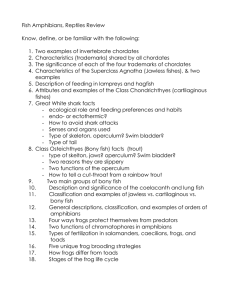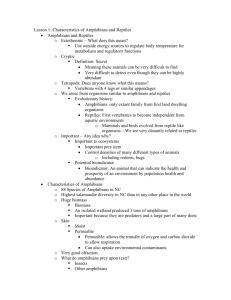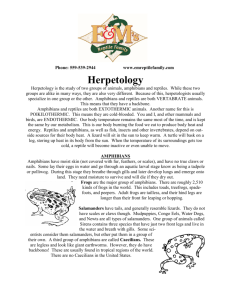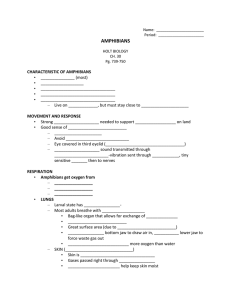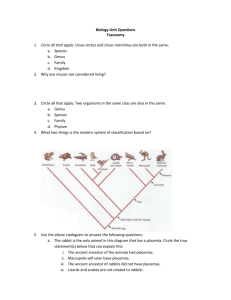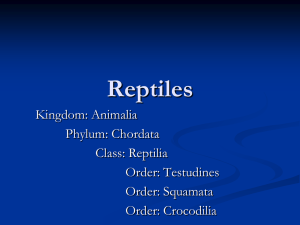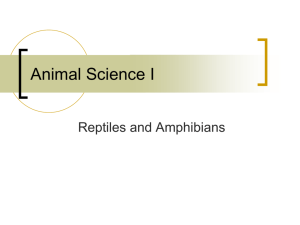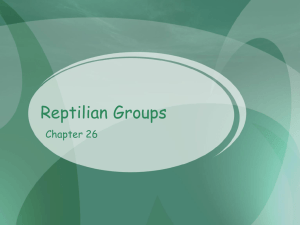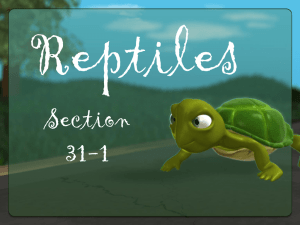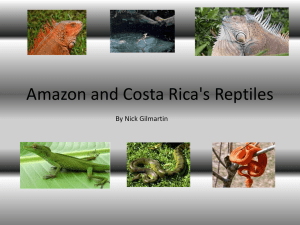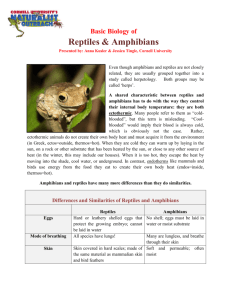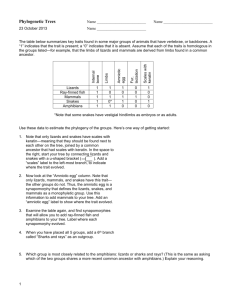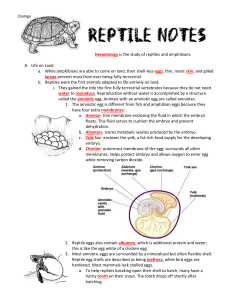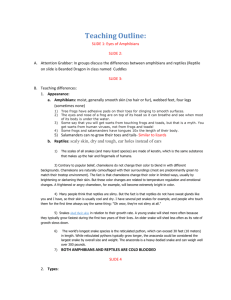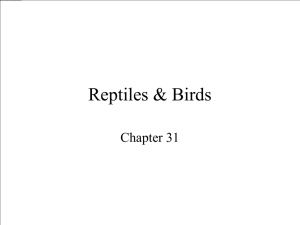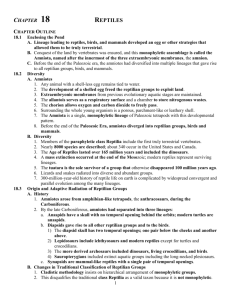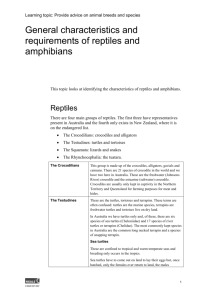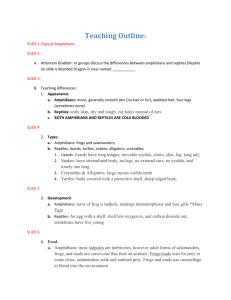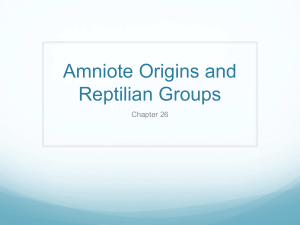Lesson 1 of monitoring program
advertisement
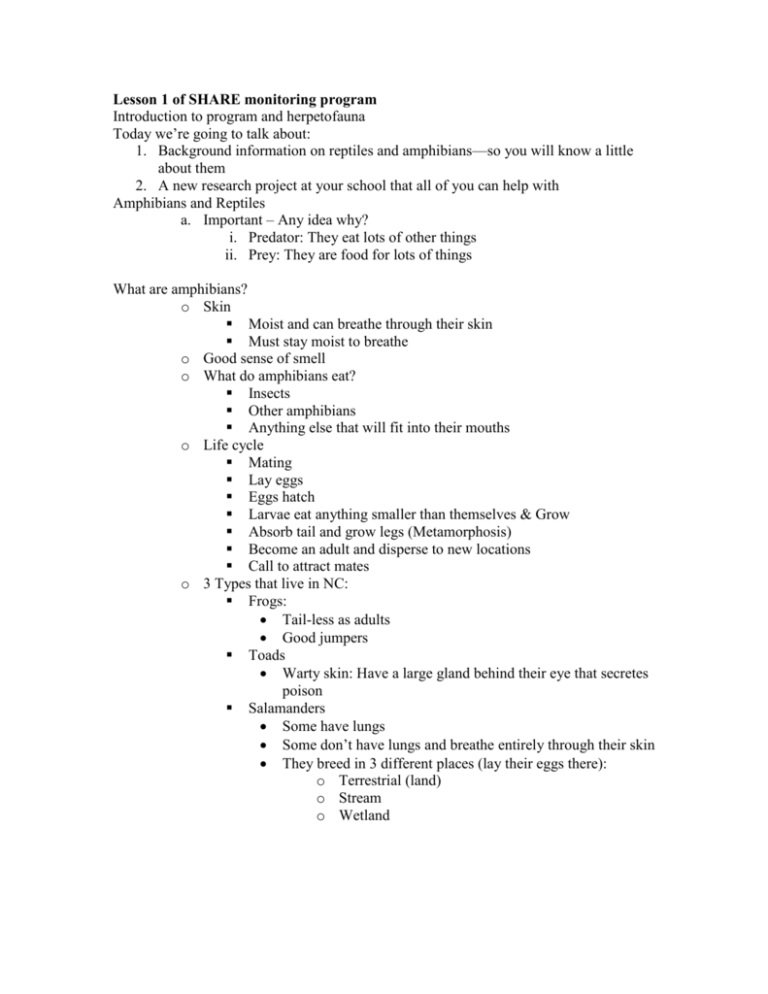
Lesson 1 of SHARE monitoring program Introduction to program and herpetofauna Today we’re going to talk about: 1. Background information on reptiles and amphibians—so you will know a little about them 2. A new research project at your school that all of you can help with Amphibians and Reptiles a. Important – Any idea why? i. Predator: They eat lots of other things ii. Prey: They are food for lots of things What are amphibians? o Skin Moist and can breathe through their skin Must stay moist to breathe o Good sense of smell o What do amphibians eat? Insects Other amphibians Anything else that will fit into their mouths o Life cycle Mating Lay eggs Eggs hatch Larvae eat anything smaller than themselves & Grow Absorb tail and grow legs (Metamorphosis) Become an adult and disperse to new locations Call to attract mates o 3 Types that live in NC: Frogs: Tail-less as adults Good jumpers Toads Warty skin: Have a large gland behind their eye that secretes poison Salamanders Some have lungs Some don’t have lungs and breathe entirely through their skin They breed in 3 different places (lay their eggs there): o Terrestrial (land) o Stream o Wetland REPTILES o lizards, snakes, turtles, crocodilians o How do they reproduce: Give birth to live young or lay terrestrial eggs w/ leathery shells o Crocodilians Only species in NC is the American Alligator o Turtles backbone is incorporated into the shell Eat plants and animals (insects and worms): Omnivorous What turtles could you find in ____ environment? Marine o All threatened or endangered o Leatherback turtle, Green, Hawksbill, Kemp Ridley, ect. o Crush from Finding Nemo Freshwater ponds and wetlands o Snapping Turtle, Painted Turtle, Slider, Mud, Musk, Bog, Cooter, ect Terrestrial o Box Turtles o Lizards and Snakes Lizards Extremely variable and diverse o Many islands have several species that don’t exist anywhere else Snakes Snakes in our area can be poisonous, but most aren’t What makes snakes different from Lizards? Don’t have legs They shed their skin as part of their growth Feeding o Eat MEAT aka only animals. o Swallow prey whole Can eat animals much bigger than themselves o Some use poison o Some squeeze (constrict) What makes a habitat? Shelter Food/water Weather o Air/wind o Rain/water o Sunlight o temperature Other animals o Predators: They eat lots of other things o Prey: They are food for lots of things What kind of habitats are in your school’s woods? Forest: Shelter: leaves, trees, logs, coverboards Food: For snakes: small snakes, worms, bugs, mice, moles, birds For turtles: leaves, plants bugs, mice, moles, small amphibians SHARE Program: cover boards and PVC pipes in the woods behind the school Why? o Do you remember what a habitat is? Coverboards: provide shelter for small reptiles and amphibians PVC pipes provide shelter for treefrogs o Because they provide shelter we can come back to the same places year after year to check the boards and see who is living underneath o Opportunity to do long term research We can monitor the relative number of snakes, salamanders or frogs using the shelters and see how it differs by year and season We can see some of the species of reptile and amphibian that live near you
